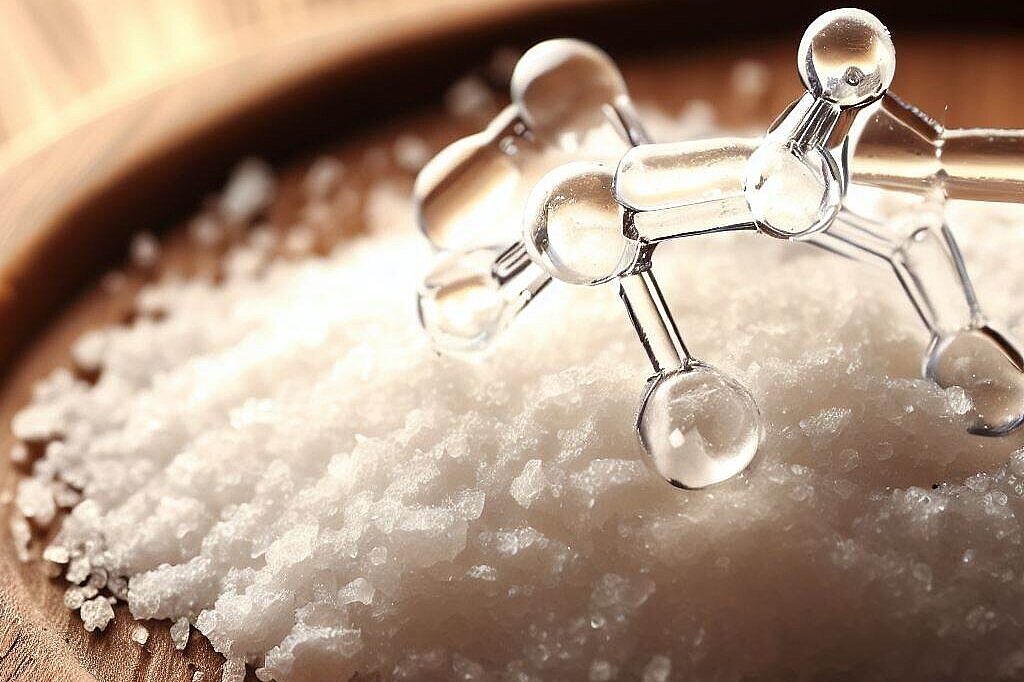Docosahexaenoic acid

What is DHA and why is it important for dogs?
DHA is a polyunsaturated fatty acid that belongs to the group of omega-3 fatty acids. Omega-3 fatty acids are essential for dogs, i.e. they cannot be produced by the body itself and must be ingested with food. DHA is particularly important for the development and function of the brain and eyes in dogs. It supports the formation of nerve cells and the transmission of nerve impulses. DHA also has anti-inflammatory properties and can therefore strengthen the immune system and prevent allergies or skin problems. DHA can also promote heart health in dogs by lowering blood pressure and cholesterol levels and improving blood circulation.
How much DHA does my dog need?
The optimal amount of DHA for your dog depends on various factors such as age, size, breed and health status. There is no universal recommendation for DHA intake in dogs, but some studies have shown that a daily dose of 20 to 40 mg DHA per kilogram of body weight can have positive effects on the well-being and performance of dogs. To achieve this amount, you can regularly give your dog fatty fish or fish oil as a dietary supplement. Pay attention to the quality and origin of the fish or oil to avoid possible pollutants such as mercury or PCBs. Alternatively, you can also use plant-based sources of DHA such as linseed oil or algae oil, which are also beneficial to health.
What are the benefits of DHA for dogs?
DHA has many benefits for dogs that can impact both physical and mental health. Here are some examples:
- DHA can promote brain development in puppies and improve their learning ability and memory.
- DHA can protect dogs' eyesight and prevent age-related eye diseases such as cataracts and macular degeneration.
- DHA can reduce the risk of cardiovascular diseases such as heart attack or stroke in dogs and increase their life expectancy.
- DHA can strengthen the immune system of dogs and make them more resistant to infections or autoimmune diseases.
- DHA can improve the skin and coat health of dogs and reduce dry skin, dandruff, itching or hair loss.
- DHA can support joint health in dogs and relieve inflammation or pain from arthritis or other joint conditions.
What disadvantages or side effects can DHA have for dogs?
DHA is generally well tolerated by dogs and has few or no side effects.
DHA is an omega-3 fatty acid that is important for the development and health of dogs. It supports brain and eye development, has anti-inflammatory properties, promotes heart health and improves skin, coat and joints. The optimal amount of DHA depends on the age, size and health of the dog, but is between 20 and 40 mg per kilogram of body weight. DHA is generally well tolerated and has few side effects.
Properties 2
Are you looking for other ingredients with a specific property?
Just click on them to find more.
If you notice any signs of hypersensitivity or poisoning in your dog, you should see your vet immediately. We are not a substitute for a vet, but we try to be as accurate as possible. Every dog reacts differently and we recommend you get a second opinion or consult your vet if in doubt.
Stay healthy and take good care of your four-legged friend!😊
Similar to Docosahexaenoic acid
Eicosapentaenoic acid is an essential fatty acid, which means that it cannot be produced by the body itself and must therefore be obtained from food. EPA is a building block for various hormones and...
ALA is a triple unsaturated fatty acid that belongs to the omega-3 fatty acids. It is the precursor for the formation of eicosapentaenoic acid (EPA) and docosahexaenoic acid (DHA), which are also...
Linolenic acid is a polyunsaturated fatty acid consisting of 18 carbon atoms and three double bonds. It is the precursor of other omega-3 fatty acids such as eicosapentaenoic acid (EPA) and...
Arachidonic acid is a quadruply unsaturated fatty acid, i.e. it has four double bonds between the carbon atoms. It belongs to the omega-6 fatty acids, which are essential fatty acids. This means...



